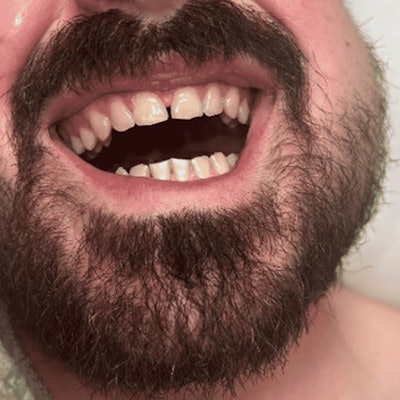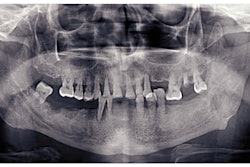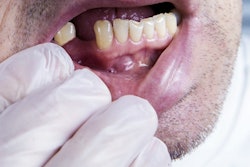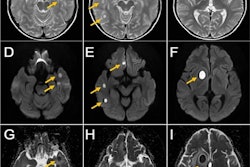
Imaging aided in the diagnosis of a 26-year-old man's very unusual infratemporal fossa abscess that developed in the lateral pterygoid, a masticatory muscle, following wisdom tooth extraction. The case report was published May 27 in the Cureus Journal of Medical Science.
A cone-beam computed tomography (CT) scan of the maxillofacial area revealed a collection of fluid in the man's lateral pterygoid, which was later found to be an infratemporal fossa (ITF) abscess. The man made a complete recovery after drainage and a course of antibiotics, the authors wrote. Researchers believe this is the second reported case of a lateral pterygoid abscess.
"The lateral pterygoid is a rare site of involvement for ITF abscesses," wrote the authors, led by Dr. Joehassin Cordero of the department of otolaryngology at Texas Tech University Health Sciences Center in Lubbock (Cureus, May 27, 2022, Vol. 14:5, e25391).
26-year-old with facial swelling
Two weeks after a bilateral maxillary wisdom tooth extraction, an otherwise healthy man presented with facial swelling on his left side. He experienced constant dull pain localized to his face with radiation to his left temple that was exacerbated when he opened his jaw. The did not experience any relief with topical 2% oral lidocaine gel and ibuprofen. Additionally, the man had trismus and a low-grade fever, the authors wrote.
The man's symptoms continued despite taking amoxicillin for one week followed by clindamycin for another week. Though the patient admitted to daily recreational marijuana use and social drinking, he denied any facial trauma, history of oral infections, or tobacco use.
In the physical exam, the man had significant swelling that was warm and tender to touch, and his buccal mucosa was tender. There was nothing unusual at the wisdom tooth extraction site, and there were no signs of dysphonia, dyspnea, and dysphagia.
 A 26-year-old man presented with facial swelling on his left side and trismus. Images courtesy of Cordero et al. Licensed by CC BY 4.0.
A 26-year-old man presented with facial swelling on his left side and trismus. Images courtesy of Cordero et al. Licensed by CC BY 4.0.Lab results showed the man had an elevated white blood cell count, and a CT scan depicted a 2.9 × 3.6 × 2.2-cm collection of fluid in the lateral pterygoid, suggesting an infratemporal fossa abscess. Due to abscess' proximity to the buccal mucosa and to provide immediate pain relief, the abscess was drained. A fluid sample was sent to the lab for testing, Cordero et al wrote.
 A maxillofacial CT scan reveals an infratemporal fossa abscess of the man's lateral pterygoid. A: Axial CT of the abscess. B: Coronal CT of the abscess.
A maxillofacial CT scan reveals an infratemporal fossa abscess of the man's lateral pterygoid. A: Axial CT of the abscess. B: Coronal CT of the abscess.Draining the abscess reduced the swelling, but the man was still admitted to a hospital for observation and given intravenous antibiotics. Despite the aspiration, the patient again experienced chills, continued fever, swelling, trismus, and pain. The lab results showed an elevated white blood cell count, and clinicians performed an operative incision and drainage, according to the report.
Within a few days following the surgery, the man experienced an improvement in trismus, pain, and swelling. Due to his symptoms improving, the man was discharged with two weeks of antibiotics and scheduled for a follow-up appointment, the authors wrote.
An infection in an unusual place
The lateral pterygoid is one of the four chewing muscles. It appears two-headed and fan-shaped and is in the infratemporal fossa of the skull. When an abscess causes inflammation to the lateral pterygoid, it can cause facial pain, chewing difficulties, and significant trismus.
Since lateral pterygoid abscesses can present similarly to temporomandibular joint dysfunction, they must be diagnosed early to prevent them from expanding to nearby structures. A spreading abscess can cause mortality due to cavernous sinus or deep cervical fascia involvement. Maxillofacial CT scans can speed treatment, prevent abscess expansion, and rule out pathology, the authors wrote.
Nevertheless, "we highlight the rarity of lateral pterygoid abscesses and the importance of distinguishing ITF abscesses from other similarly presenting conditions such as temporomandibular joint dysfunction," Cordero and colleagues wrote.




















